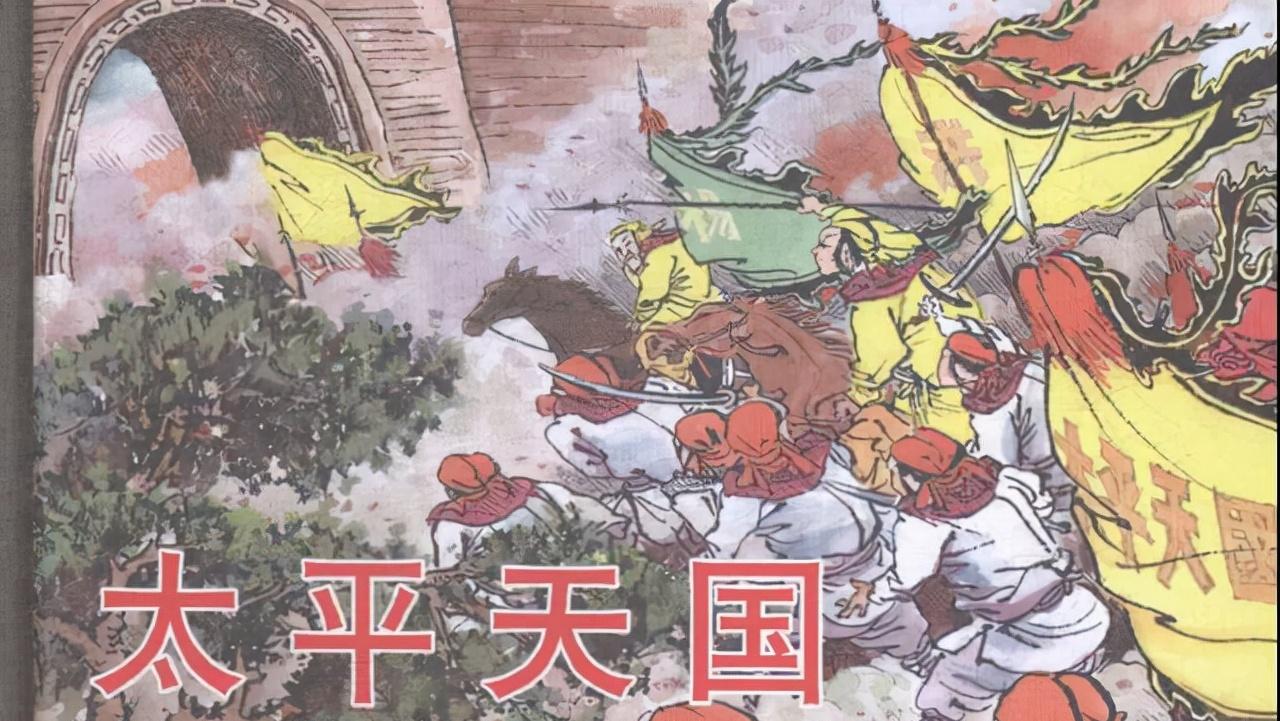
Taiping Heavenly Kingdom (1851~1864) (where the word "tian" is two horizontal and long and short; The word "kingdom" is the word "king"), and in the later period, it was successively renamed god's kingdom of heaven. It was a peasant regime created by a peasant uprising in the late Qing Dynasty and the largest peasant war in Chinese history.
From the end of 1850 to the beginning of 1851, a leading group composed of Hong Xiuquan, Yang Xiuqing, and others launched an armed uprising against the Manchu Qing court in JintianCun, Guangxi, and later established the "Taiping Heavenly Kingdom", and in March 1853, jiangning (now Nanjing) was captured, and the capital was set here, renamed Tianjing. In August 1864, Tianjing, the capital of the Taiping Heavenly Kingdom, was captured by the Xiang army, and Hong Xiuquan's son, Hong Tianguifu, the young king of Heaven, was captured.
The so-called mystery of the treasures of the Taiping Heavenly Kingdom is divided into two kinds, one is the mystery of the whereabouts of the Tianjing Cellar Gold, and the other is the mystery of the treasure of the Yiwang Shi Dakai Dadu River, which is the two great treasures of the Taiping Heavenly Kingdom. The defeat of the Taiping Heavenly Kingdom is lamentable, and the disappearance of the taiping heavenly kingdom's huge wealth is also regrettable. Tianjing fell, the whole army was destroyed, and a large number of jewels evaporated from the human world. Chinese and foreign countries spread the wealth of the flood, gold and silver like the sea, department stores are full, and more treasures are hidden underground.
There are two theories about the treasure
Tianjing Treasures
After the Xiang army entered the city, Zeng Guoquan's troops were the first to enter the Heavenly King's Palace, and according to legend, Zeng Guoquan dug up Hong Xiuquan's hidden gold and put it into his own pocket, and finally burned the Heavenly Dynasty Palace in order to destroy the evidence. The Qing people have notes that there is an emerald watermelon in Hong Xiuquan's cellar gold that came out of the Yuanmingyuan, and there is a crack on it, black spots like children, red like a gourd, long and bright, all of which are natural. This treasure was actually in the hands of Zeng Guoquan later.
When the Xiang army plundered the Heavenly King's Mansion, it searched very carefully, and even the body of Hong Xiuquan, who was secretly buried in the Heavenly King's Mansion, was exhumed and burned to ashes. How could a large amount of cellar gold not be found? Therefore, many people are willing to believe that Zeng Guoquan got the cellar gold.
It is also recorded: "The wife of Gongbao Zengzhongtang (referring to Zeng Guofan) returned to her hometown (Hunan) from Jinling in early March to escort the ship, about two hundred and dozens." With so many ships transporting, one cannot but suspect that Brother Zeng is sending looted cellar gold to his hometown.
The Qing Dynasty scholar Li Boyuan's "Notes on the Southern Pavilion" records: "Wen Zhongxiang received tens of millions of dollars in this. Except for a few retribution, the rest are at home. Zhongxiang, that is, Zeng Guoquan, said that he had tens of millions of dollars in income from the capture of Nanjing.
Shi Da kai treasure
In addition to the mystery of the Treasure of Tianjing, the Taiping Heavenly Kingdom also has a mystery of treasure hiding.
According to the "Story of Treasure" published by the China Book Publishing House, the Taiping Army led by Shi Dakai, the wing king of the Taiping Heavenly Kingdom, was destroyed on the eve of the Dadu River, and a large amount of gold and silver treasures in the army were buried in a secret place. Shi Dakai still had a schematic diagram of the treasure at that time. On the picture is written the eight-character hidden precept of "facing the water and relying on the mountain; treasure in the middle".